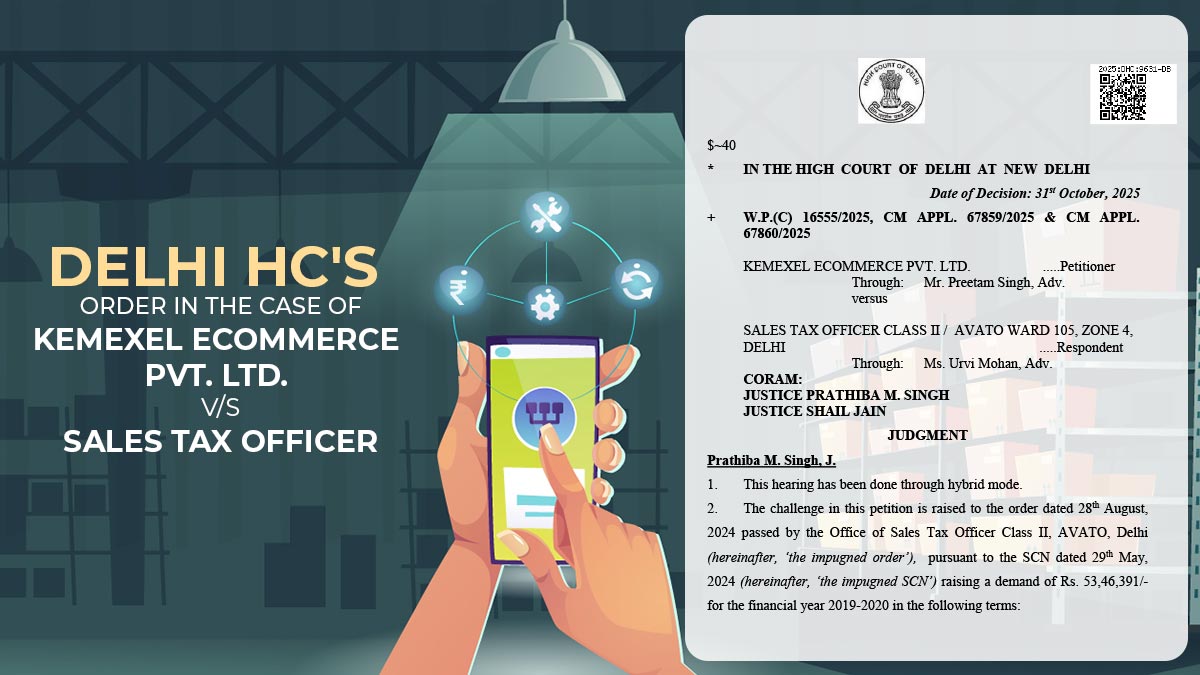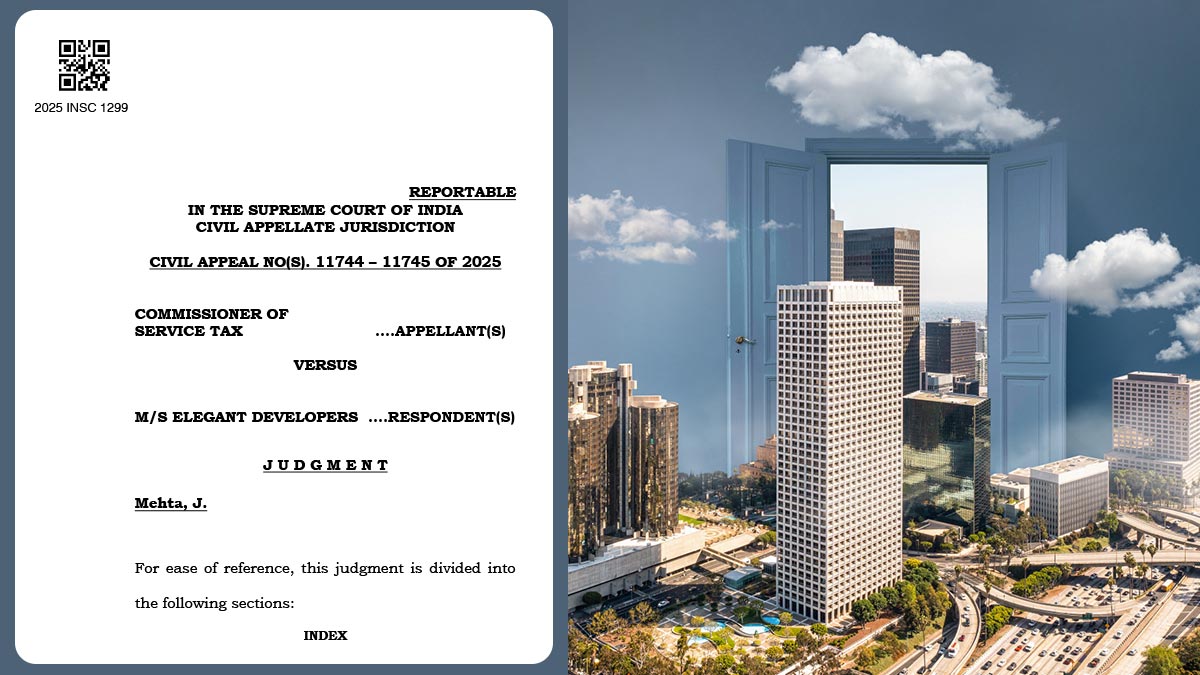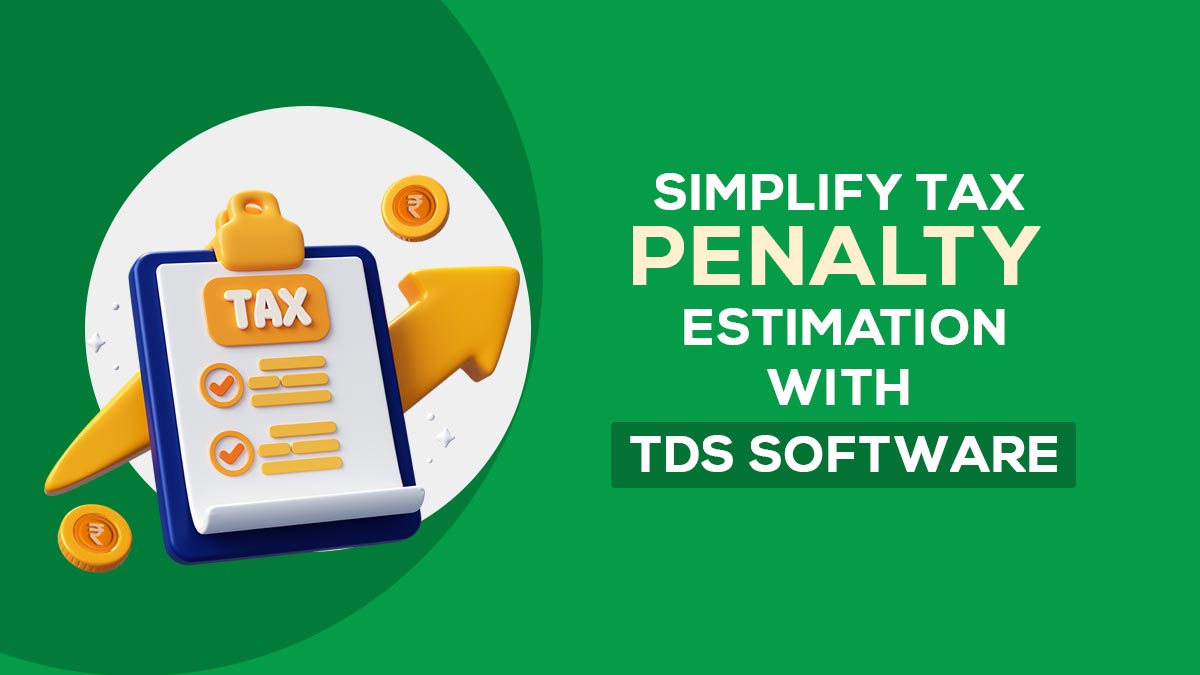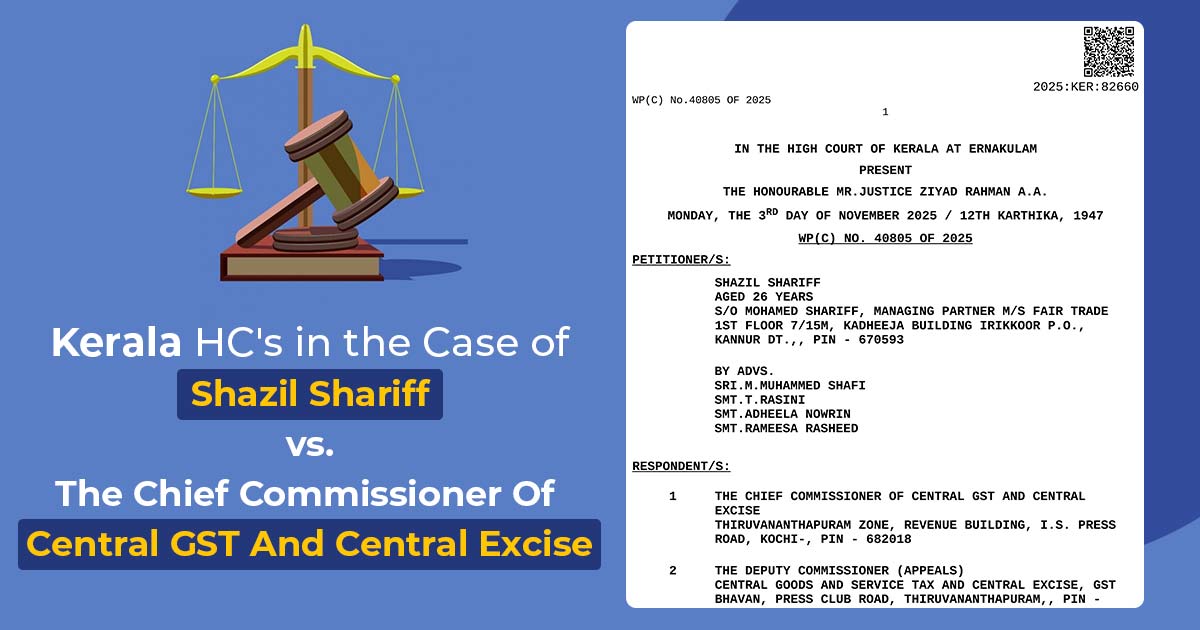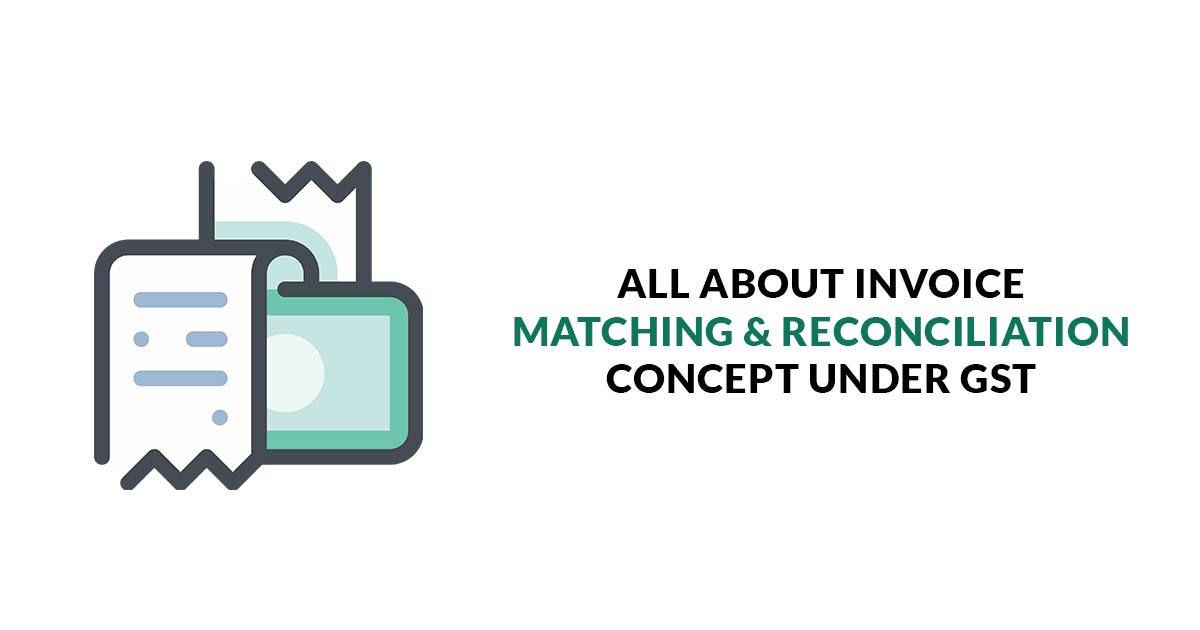
Invoice Matching and Reconciliation were part of the erstwhile VAT regime too. But the process of matching data between account books and tax returns was not as tedious as it is under the current indirect tax structure in India i.e GST. The provisions for ITC or Input Tax Credit Claims under GST means that GST authorities have their eyes fixed on businesses to curb any discrepancies in processing returns by taxpayers.
GST not only requires regular monitoring by tax department but also necessitates monthly reconciliation by taxpayers too. The GST forms reconciliation has to be done between taxpayer return data and data declared by vendors. The process is automated and semantically links GST returns with vendor declarations. In this article, we discuss in detail the What, How and Why of Invoice Matching & GST Forms Reconciliation.
Invoice Matching & GST Forms Reconciliation under GST
Discrepancies in credit shown and claims made can result in mismatches during Invoice Matching and Reconciliation exercises. These discrepancies are most prominent during the transition phase and may arise from:
- Mismatch in credit shown in GSTR- 3B and the GSTR 2A/2B or/and
- The mismatch between GSTR-3B and GSTR-1 or/and
- Discrepancies in provisional credit claims and actual claimable credit
The above discrepancies and mismatches were most prominent during the tethering stages of GST. Some other common reasons for discrepancies and respective redressals are discussed below.
- The vendor has made no liability claims on supplies but the availed credit against these supplies in GST returns. Businesses must voluntarily cross-check and confirm that liabilities are declared by vendors
- The vendor has declared liability but made no respective credit claims in GST returns. These credits must be availed by September Return Due dates or before filing GST Annual Returns
- Inconsistencies between liabilities declared and credit claimed by the vendor must be addressed immediately by identifying the appropriate reasons. The reconciliation must be done by issuing the debit notes/credit notes etc
- Filing Errors like entering wrong GSTIN of the supplier/recipient, number and date of the invoice/debit note etc during monthly return filing also result in the mismatch. Any necessary amendments must be done while filing the subsequent months GST returns
Though reconciliation is an automated process under GST, it still remains a time-consuming exercise. Further, Rectification in errors and mismatches during return filing requires prompt tracking with synchronized communication between taxpayers and vendors. At times a considerable amount of resources has to be deployed for even a single decimal point error in returns resulting in a voluminous mismatch. Hence, it is advisable to periodically reconcile returns data under GST.
GST Forms Reconciliation: An Important Step for Easy ITC Claims
GSTR-2A/2B is auto-populated under GST. The details are generated on behalf of the taxpayers from his/her seller’s GSTR-1. The new GST provisions mandate that ITC claims can be made by taxpayers only when the respective invoice details with the A data or vendor data. Even a single error or mismatch in monthly invoices and respective vendor data can stall taxpayers ITC Claims. This makes periodic reconciliation of purchase register and 2A/2B data paramount for hassle-free ITC claims.
A few Points to Note
1. If you are registered under GST then
- GST Returns are to be filed on a monthly or quarterly basis
- Annual Returns are to be filed on or before 31st December of succeeding FY.
- Annual Returns would require consolidation of monthly/quarterly return data for the preceding FY. To avoid any errors, duplication or mismatch of the declaration with 2A/2B taxpayers must reconcile the data, then consolidate the values and make the declaration
2. The GST Law lays strict deadlines for amendments in GST returns data or ITC claims. As per the CGST Act, Taxpayers must perform all below-mentioned tasks on or before the September GST returns of respective FY or the Annual returns due date :
- Claim any eligible ITC against invoices raised
- Highlight CDNs brought against any Invoices
- GST Composition Scheme owners or taxpayers who no longer use composition scheme for the current year must make amendments in the return filed during 2017-18 prior to migration
Are you GST Reconciliation Ready?
Reconciliation will require the taxpayer time and focus. It must first be done over the GSTIN network and later carried over to the PAN level.
- Reconciliation must be done for all 12 months of FY 2017-18
- Any amendments made to GST returns of the Previous year in the CY must also be consolidated
Input tax credit (ITC) remains pivotal for an effective and successful GST. Taxpayer ITC Claims can be cross-checked in parallel with the return filing process itself. All because of the auto-populated GSTR-2A/2B form, ITC claims can be verified during the filing itself rather than the erstwhile practice of ITC claims verification during processing of filed VAT returns.
The real-time matching process demands that the vendor-wise reconciliation must be done on a regular basis. In case taxpayers have not yet done the same, they must remember to do it before September 2018 GST returns. This will help the Fastrack taxpayers ITC claims via timely verification before the aforementioned deadline. Important consolidatory points for ITC deadline meet.
- Taxpayers must reconcile transitional ITC from earlier VAT credit
- Taxpayers must claim all eligible ITC for the Previous year as well as reverse ineligible ITC if any
- Match ‘exports’ Table in section 6A of GSTR-1 with the respective declarations in GSTR-3B
- Match ‘exports’ Table in section 6A of GSTR-1 with shipping bills details part of ICEGATE
- Taxpayers must also compare Annual Income Tax Return with Annual GST return
Turnover Declaration of Business(at PAN level)
- Match Purchase register with details filed in GSTR-2A/2B for complete FY
- Match GSTR-1 details with those of GSTR-3B
- Match ITC claims in GSTR-3B with those of GSTR 2A/2B for complete FY
Concerning Factors During GST Forms Reconciliation
Reconciliation under GST comes with its own set of headaches which include eligibility concerns, possible notices for discrepancies, Disparity over ITC Claim Limit, non-cooperation from suppliers, compliance burden etc. A major challenge faced by two business parties (suppliers and buyers)
One of the major challenges in doing a reconciliation is the use of different conventions during input of invoice numbers. In addition to these, there are a host of other concerning factors that can pop-up every now and then. These include:
- Mismatch of seller-buyer invoice numbering due to use of different convention during input
- Supplier raising invoice with wrong GSTIN/HQ GSTIN for a particular business with operations in multiple states
- GSTIN may not properly reflect invoice details with wrong state GSTIN of the buyer/business
- Invoice date mismatch owing to the different location of buyer/supplier or referring date from the sales invoice
- Supplier and Buyer recording different return periods for the same invoice
- Supplier and Buyer Invoice value mismatch owing to different conventions of rounding off
- Mismatch in invoice number and date of supplier and buyer
- “The invoice value differs at supplier and purchaser’s end in case a CN/DN is issued and it fails to match in a recon row”
- Regular Fixed Supply businesses encounter mismatch when invoice count of either the supplier or the buyer exceeds the other. In such cases, all invoices raised by both parties have the same value at different issue dates
Confused… Why Not Use Tools and Software?
IT remains the backbone for the smooth functioning of GST. There is no denying the fact that GST brings transparency to India’s Tax structure but it also increases compliance and resource burden on businesses/taxpayers.
It is advisable to opt for tools or software that close down on mismatch due to human error or negligence. Besides, technology will also help in faster yet accurate GST compliance for taxpayers. However, opting for the right tool or software for GST Annual Return filing and reconciliation is not easy. Taxpayers must look out for the following features before zeroing-in on a powerful reconciliation software for matching and reconciling GST returns data.
- The Software/Tool must handle voluminous data at easy with no lags or interrupts
- ERP Compatibility is another feature to look for in GST Software or tool for back and forth migration of non-reconciled and reconciled data before and post GST reconciliation. Look for software offering seamless integration with data resources like ERP, Excel, bill books, etc.
- The User Interface must be easy to handle and get hands-on with. The reconciliation process despite being repetitive must not seem tedious or burdening
- Software Updates must be prompt and equally effective in line with the changing GST norms for returns and ITC.
- Facilitate data sharing and teamwork between the business owner and his accountant(s)
- The auto-correct feature must be able to handle and correct any missing or wrong information in invoices like wrong tax rate, wrong invoice numbers, missing items, wrong sale value, wrong dates, etc
The above are some of the most important tools to look for when looking for a GST Reconciliation Tool or Software. Some special features like Proactive reminders and real-time invoice integration for reconciliation would further make Invoice Matching & Reconciliation under GST faster and efficient.




